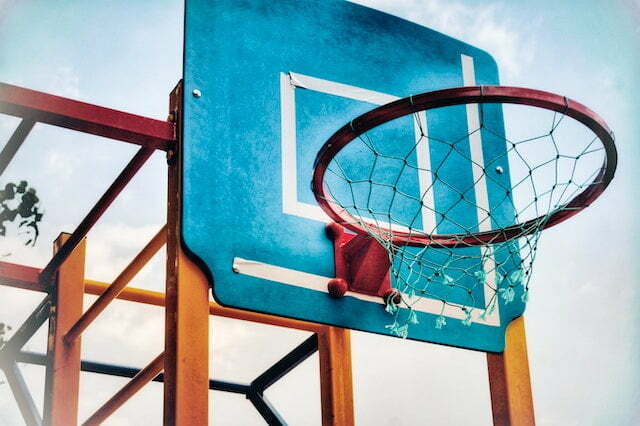
Basketball Rules – Introduction
Basketball is a fast-paced and exciting sport enjoyed by millions of people all over the world. Whether you’re a seasoned player or just starting out, it’s important to have a solid understanding of the rules of the game. This page provides an overview of the most essential rules of basketball, including the court dimensions, fouls, and scoring. By familiarizing yourself with these rules, you’ll be better equipped to play and enjoy the game to the fullest.
Equipment and Field of Play
Court Dimensions
The court dimensions used in basketball measure 94 feet in length and 50 feet in width. The court is divided in half by a midcourt line, and the free throw line is located 15 feet from the backboard. The three-point arc is located at a distance of 23 feet, nine inches from the center of the basket.
Equipment
The equipment required to play basketball includes a dribble-able basketball, a hoop, a backboard, and a timer. Additionally, there are various other pieces of equipment used such as a shot clock, scoreboards, and a scoreboard.
Players
Number of Players
Basketball is usually played with five players on each team, although there are variations such as three-on-three and four-on-four. Each team also has a coach and other support staff.
Positions
The primary positions in basketball are point guard, shooting guard, small forward, power forward, and center. Each of these positions has specific roles and responsibilities on the court.
Starting the Game
Jump Ball
The game starts with a jump ball between two opposing players. The official tosses the ball into the air between them, and the players attempt to tap the ball in the direction of their teammates.
Free Throw
A free throw is awarded to a player who has been fouled while attempting a shot from the field. The player stands at the free throw line and takes a single shot.Playing the Game
Ball Handling
Ball handling is an important skill in basketball. Players must be able to dribble, pass, and shoot the ball effectively in order to be successful.
Scoring
Scoring in basketball is done by shooting the ball through the hoop. Points are awarded for shots made from within the three-point arc and for free throws.
Fouls
Fouls are violations of the rules of the game, and can result in a free throw for the opposing team. They can also result in a player being ejected from the game.
Time and Substitution
Time Outs
A time out is a break in play, during which the teams can discuss strategy and make substitutions. Time outs can be called by either team or by the officials.
Substitutions
During a game, teams can make substitutions to replace players who are injured or tired. Substitutions must be made within a certain amount of time, and can only be made when the ball is not in play.
Violations
Traveling
Traveling is the act of taking more than two steps without dribbling the ball. This is considered a violation and results in a turnover.
Double Dribble
Double dribbling occurs when a player dribbles the ball with two hands or stops dribbling and then resumes dribbling. This is also considered a violation and results in a turnover.
Goaltending
Goaltending occurs when a player touches the ball after it has left the shooter’s hand and is on its way towards the basket. This violation results in the basket being awarded to the shooting team.
Conclusion
In conclusion, basketball is a great game of skill, speed, and agility. It is played on a rectangular court by two teams of five players each. The objective of the game is to score points by shooting a ball through an elevated hoop. There are many rules and regulations governing the game, including rules regarding court dimensions, equipment, players, and violations. When followed properly, these rules help to ensure a fair and enjoyable game of basketball.
